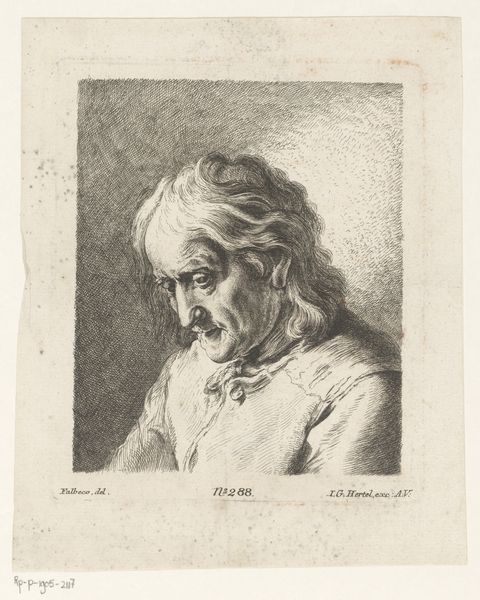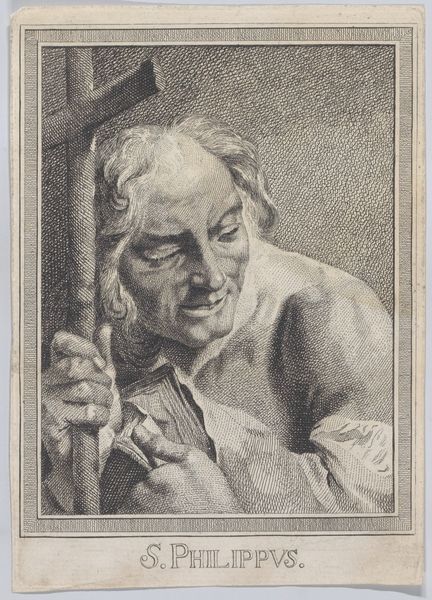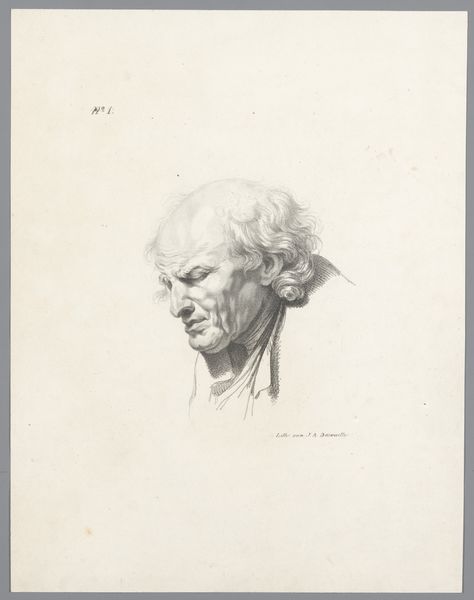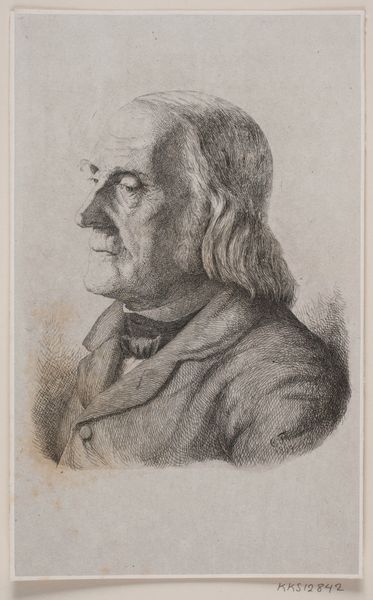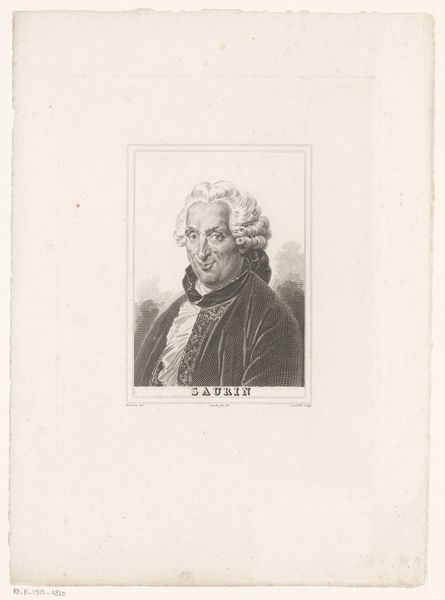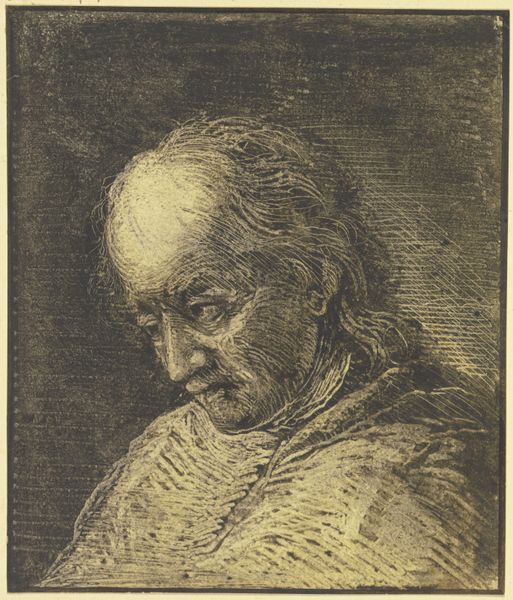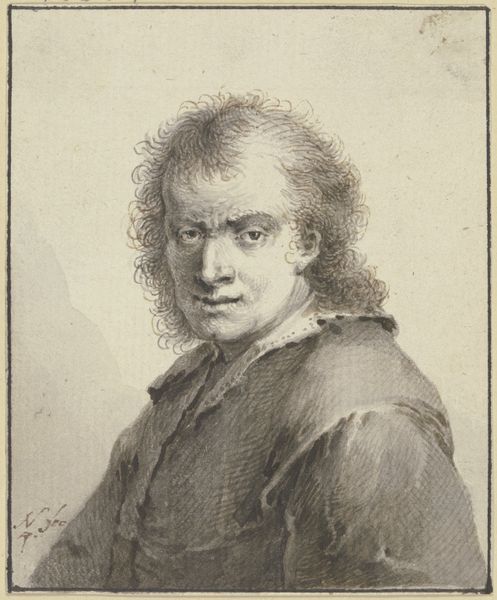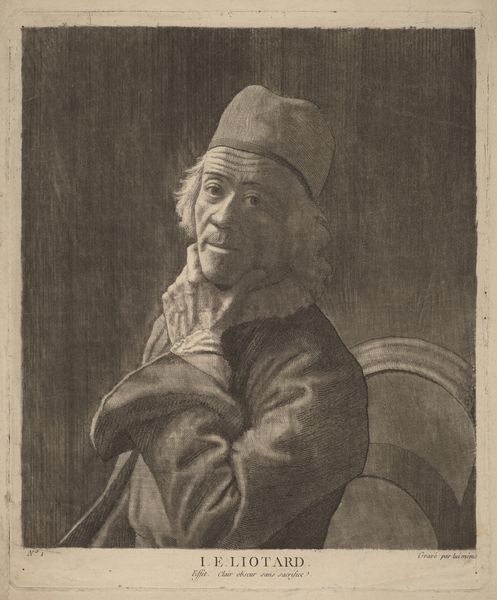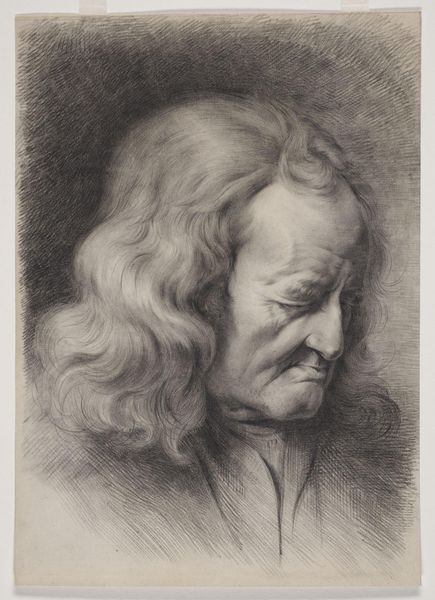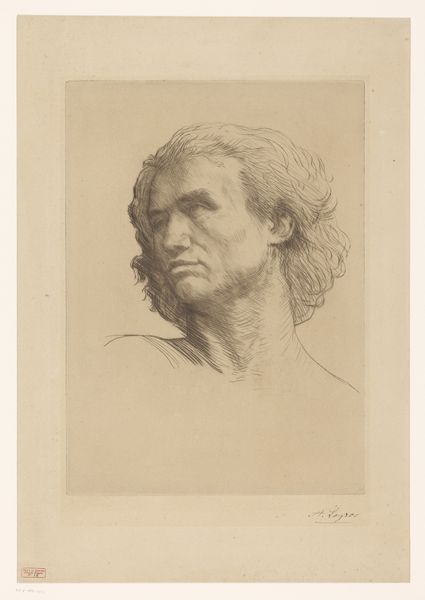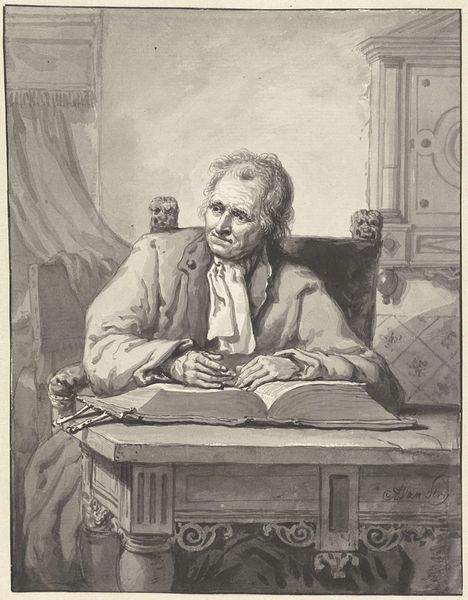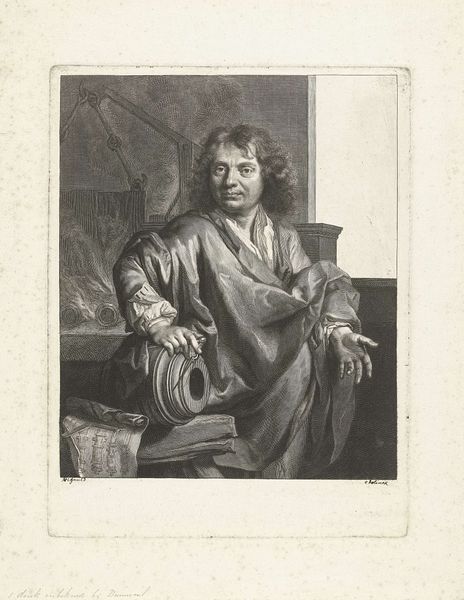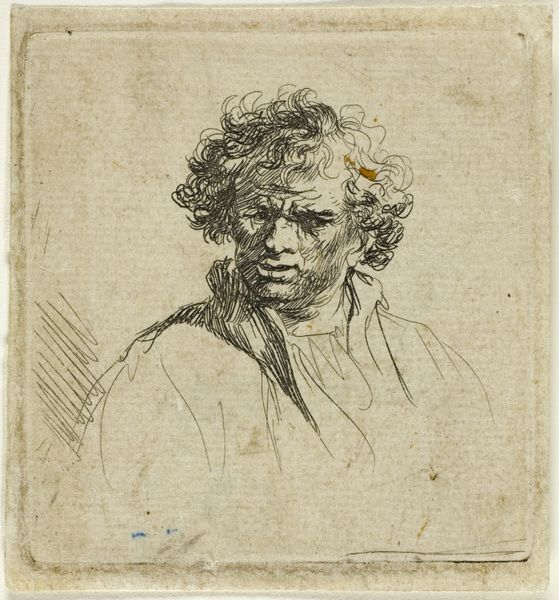
Plate 1: Pensive man resting his head on his hand; from 'Icones ad vivum expressae' after Giovanni Battista Piazzetta 1743
0:00
0:00
drawing, print, engraving
#
portrait
#
drawing
#
baroque
# print
#
men
#
portrait drawing
#
engraving
Dimensions: Plate: 17 11/16 × 13 1/8 in. (45 × 33.4 cm) Sheet: 19 1/2 × 15 3/16 in. (49.5 × 38.5 cm)
Copyright: Public Domain
Editor: This is “Plate 1: Pensive man resting his head on his hand,” an engraving from 1743, made after Giovanni Battista Piazzetta by Giovanni Cattini. It's strikingly detailed. What's your take on this portrait? Curator: From a materialist perspective, I’m fascinated by the engraving process itself. Consider the labour involved in creating those fine lines, the meticulous transfer of Piazzetta’s original drawing into a reproducible print. We need to look at the cultural demand for portraiture at this time and who had access to this form of image-making and consumption. What do you think was the purpose of this portrait? Editor: Well, it says it’s a memorial, so maybe for the family of the sitter to remember him? Curator: Exactly. How was the memorial shaped by this process, however? Think about the economic implications of engraving. Who could afford this? Did the creation and distribution of such images create or re-inscribe class boundaries? And what are the means of image distribution here; who owned the means of circulation? Editor: That's interesting. I never thought about engravings as something so linked to economics. It feels very different to portrait painting. Curator: Precisely! By focusing on the materiality of the print—the copper plate, the ink, the paper, and the labor required—we see how art is always embedded within broader networks of production and consumption. The availability of the material influences the artistic approach, and also its circulation. Editor: So, rather than focusing just on the sitter or even the artist, we can analyze the entire system that made this image possible. I get it. Thank you. Curator: Absolutely. It’s about understanding art not just as aesthetic experience, but as a product of its time, shaped by material conditions.
Comments
No comments
Be the first to comment and join the conversation on the ultimate creative platform.
